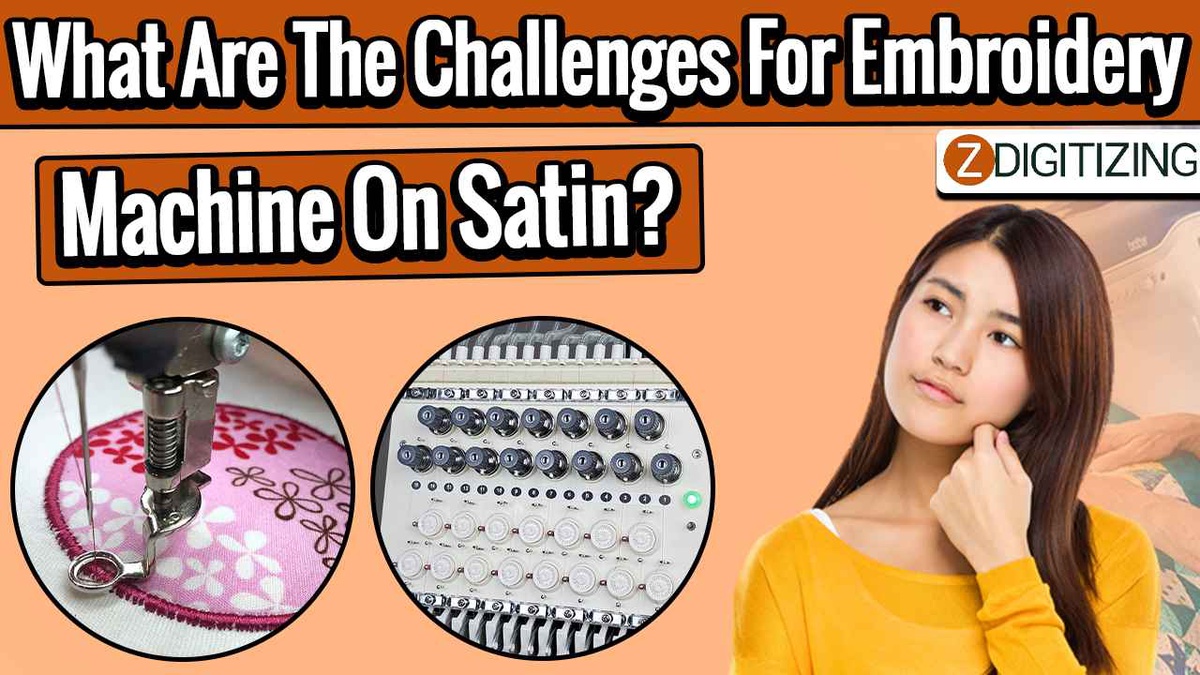Introduction
Embroidery is an ancient craft that has stood the test of time, evolving from delicate hand-stitched patterns to the marvels of modern technology. The advent of embroidery machines has revolutionized the industry, making it faster, more precise, and accessible to a broader audience. Satin, with its luxurious sheen and smooth texture, is a popular fabric choice for embroidery projects, but it also presents unique challenges to the embroidery machine and the embroiderer. In this blog, we will delve into the world of embroidery on satin and explore the challenges that arise during the process.
1. Satin Fabric: A Luxurious Canvas
Satin is a fabric known for its lustrous surface and soft drape, making it an attractive choice for various applications, including evening gowns, lingerie, and home décor. Its smooth texture allows the embroidery to shine brightly, creating stunning designs with a touch of elegance. However, this very same characteristic poses challenges for embroidery machines due to its slippery nature and delicate threads.
2. Thread Tension and Satin Fabric
One of the primary challenges faced by embroidery digitizing machines when working with satin is maintaining the appropriate thread tension. Satin tends to shift and pucker easily, and if the thread tension is not adequately balanced, it can lead to uneven stitches, loose threads, or even fabric damage. Achieving the perfect balance of thread tension requires expertise and adjustments that may vary from one satin fabric to another.
3. Needle Selection and Breakage
Choosing the right needle is crucial when embroidering on satin. The fabric's slippery surface demands a delicate touch, and using the wrong needle can lead to breakage and frustrating delays. Needles with a small eye and sharp point are generally recommended for satin embroidery. Even with the proper needle, breakage can still occur due to the fabric's delicate nature, putting additional strain on the embroidery machine.
4. Hooping Challenges
Hooping is the process of securing the fabric tightly in the embroidery hoop to ensure stability during the stitching process. With satin, this can be a tricky task. The slippery and lightweight nature of the fabric makes it prone to shifting, causing misalignment and poor stitch quality. Embroiderers must be cautious while hooping to avoid distorting the fabric and achieve accurate design placement.
5. Design Density and Satin Fabric
Design density refers to the number of stitches packed into a specific area. While dense designs may work well on sturdier fabrics, satin's delicate fibers can be overwhelmed by excessive stitching, causing the fabric to pucker or become stiff. The challenge lies in finding a balance between a design that is detailed enough to be visually appealing and one that does not compromise the integrity of the satin.
6. Digitization for Satin Embroidery
Digitization is the process of converting artwork into digital embroidery files that guide the machine's stitching. When working with zdigitizing in satin, the digitization process becomes intricate, as the embroidery file must be tailored to suit the fabric's unique characteristics. Designers must carefully select stitch types, lengths, and densities to ensure the satin's beauty is enhanced rather than diminished.
7. Managing Satin Fraying
Satin fabric is susceptible to fraying, which can be exacerbated during the embroidery process. The repeated puncturing of the fabric with the needle can lead to frayed edges and unsightly results. Employing techniques like using fray check or sewing a narrow border around the design's perimeter can help minimize fraying and maintain a clean finish.
8. Thread Selection and Sheen
The choice of embroidery thread significantly impacts the final outcome of the design. Satin's reflective surface interacts differently with various thread types, affecting the design's overall appearance. The embroidery machine operator must consider the thread's sheen and thickness to ensure the design retains its intended allure when stitched onto the satin fabric.
9. Slow Stitching Speeds
Embroidery on satin often demands slower stitching speeds compared to working on other vector art services fabrics. Slower speeds allow the machine to handle the delicate fabric more gently, reducing the risk of puckering and misalignment. However, slower stitching also means longer production times, which may not be ideal for large-scale projects.
Conclusion
Embroidering on satin is a beautiful yet challenging art that requires skill, patience, and attention to detail. The combination of a luxurious fabric with the precision of modern embroidery machines results in stunning creations that adorn our world. By understanding and addressing the challenges associated with satin embroidery, both embroiderers and machine manufacturers can continue to push the boundaries of this time-honored craft, creating exceptional works of art for generations to come.


No comments yet